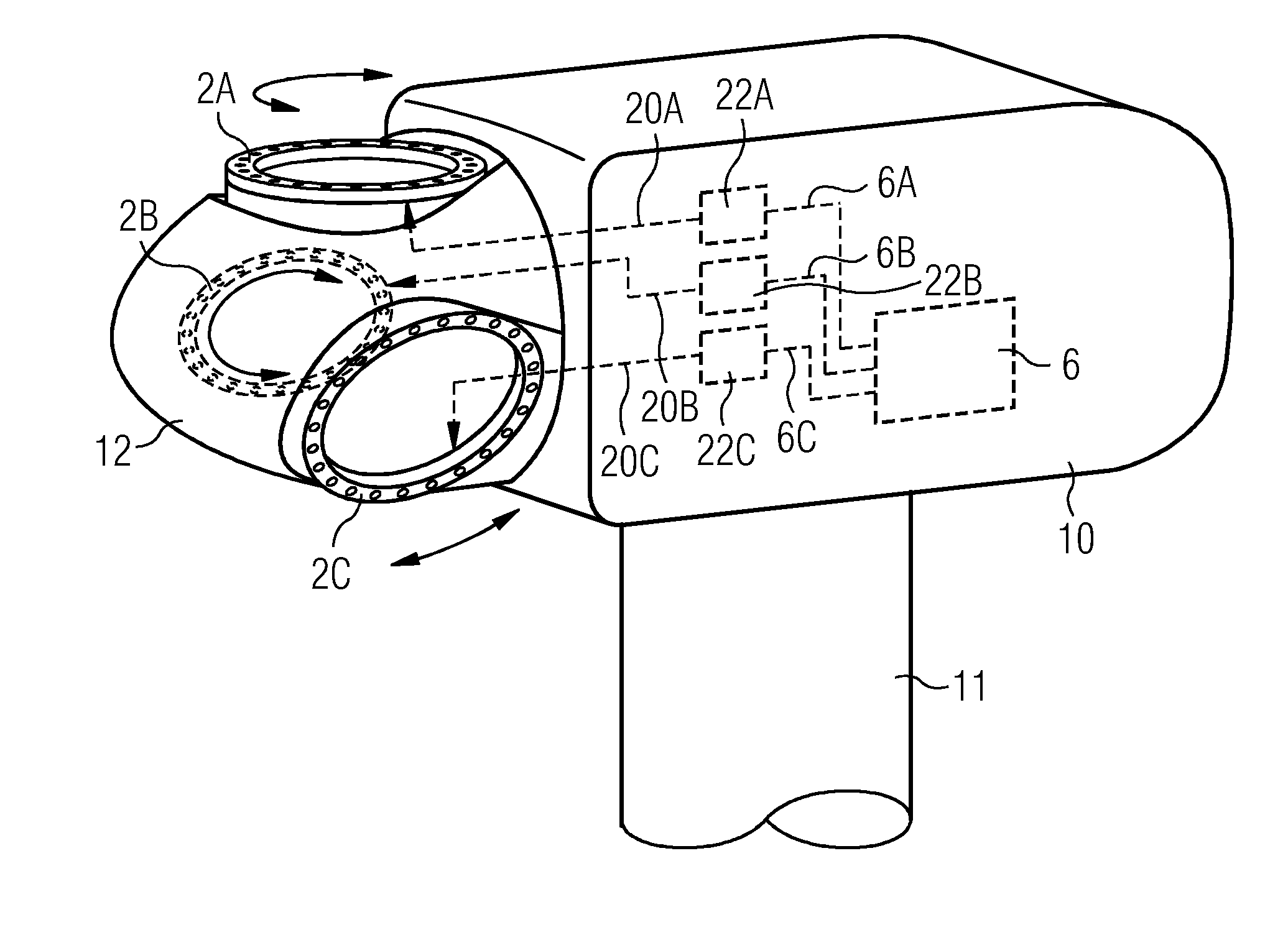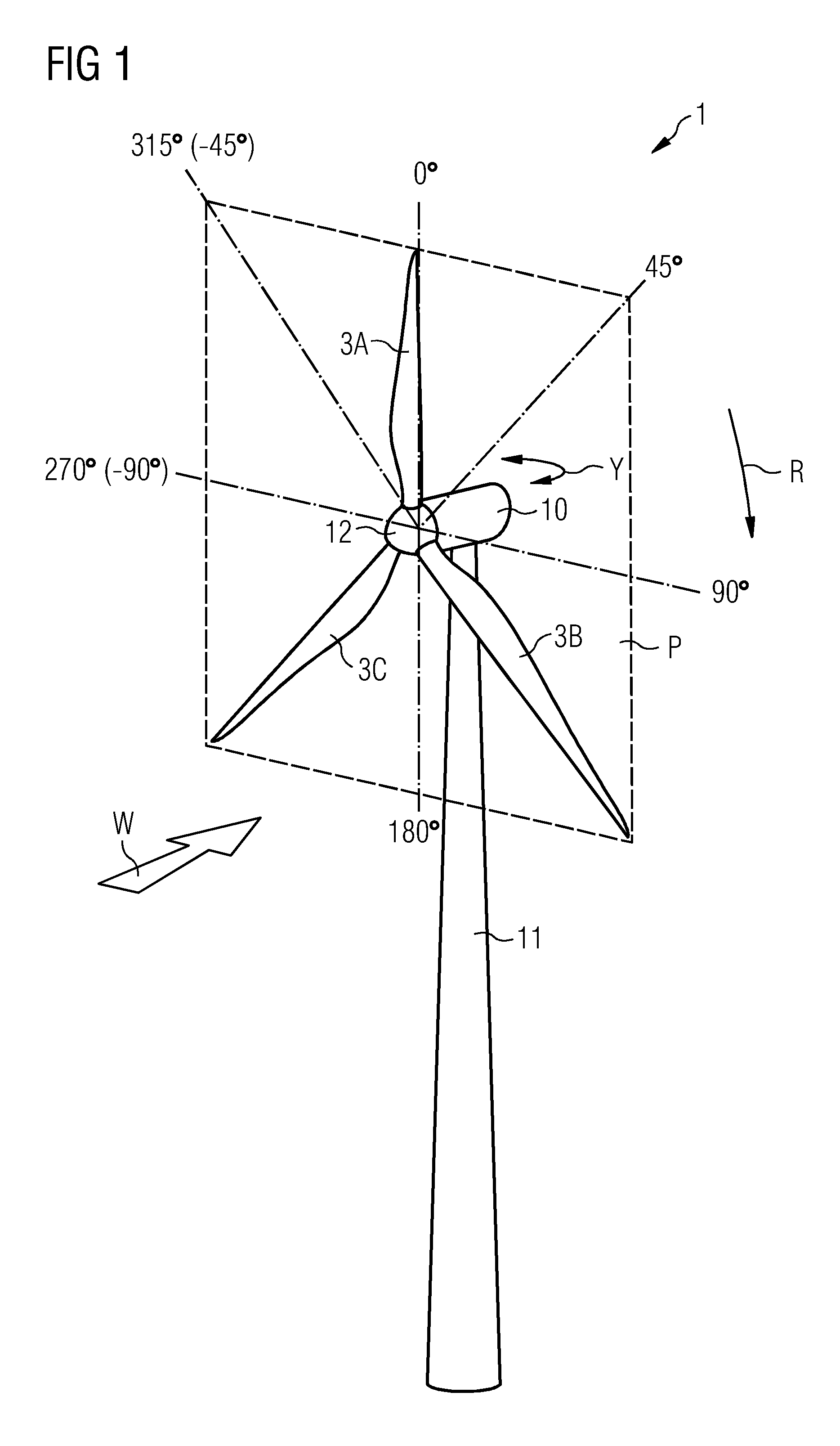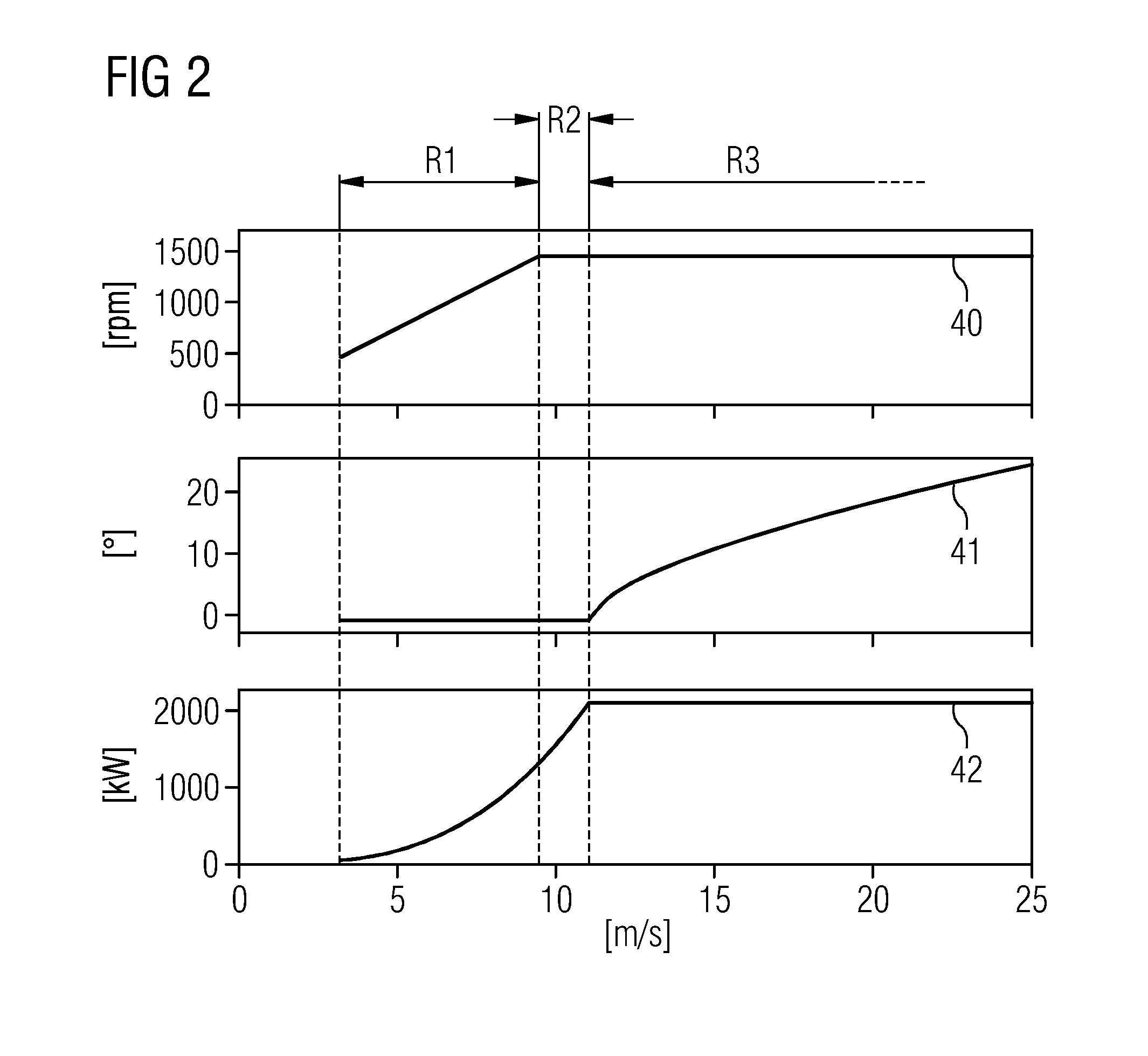Method of controlling pitch systems of a wind turbine
- Summary
- Abstract
- Description
- Claims
- Application Information
AI Technical Summary
Benefits of technology
Problems solved by technology
Method used
Image
Examples
first embodiment
[0047]FIG. 5 shows a graphical representation of a plurality of auxiliary pitch control signals 4A, 4B, 4C generated using the method according to the invention. The auxiliary pitch control signals 4A, 4B, 4C are applied to the respective rotor blades at certain defined intervals. Here, an auxiliary pitch control signal 4A, 4B, 4C is applied to its rotor blade when the rotor blade passes through the sector within ±90° about the reference 0° as described in FIG. 1. The circle described by a blade over time as it rotates from 0° to 360° is visually presented here by the sawtooth graphs 5A, 5B, 5C of blade angular travel. For the sake of simplicity, it is assumed that the blades rotate with a constant rotational velocity, with correspondingly uniform sawtooth graphs. Considering a first blade with sawtooth graph 5A: the auxiliary pitch control signal 4A for that blade is applied from the time the blade passes the 270° position until it passes through the 90° position of the rotational ...
second embodiment
[0049]FIG. 6 shows a graphical representation of a plurality of auxiliary pitch control signals 4A, 4B, 4C generated using the method according to the invention. Here, the time interval between successive auxiliary pitch control signals 4A, 4B, 4C is smaller. As the first blade 3A passes through the upper half of the rotational plane P shown in FIG. 1, i.e. through the sector given by ±90° about the reference 0°, its auxiliary pitch control signal 4A is applied. As the next blade 3B enters this sector, the first blade 3A still has 60° of travel to complete in the upper half of the rotational plane. Therefore, the auxiliary pitch control signals 4A, 4B overlap over a certain time interval, and the same applies for the auxiliary pitch control signals 4B, 4C. Here, only one set of three auxiliary pitch control signals 4A, 4B, 4C is shown. Of course, an auxiliary pitch control signal 4A, 4B, 4C could be applied to each blade during each rotation, so that the auxiliary pitch control sign...
third embodiment
[0050]FIG. 7 shows a graphical representation of a plurality of auxiliary pitch control signals 4A, 4B, 4C generated using the method according to the invention. As shown in FIG. 6 above, the auxiliary pitch control signals 4A, 4B, 4C are applied successively during one rotation of the hub. Here, however, an auxiliary pitch control signal 4A, 4B, 4C is applied as a blade passes through the sector given by ±45° about the reference 0°, i.e. through a quarter of the rotational plane. Therefore, the auxiliary pitch control signals 4A, 4B do not overlap. Again, only one set of three auxiliary pitch control signals 4A, 4B, 4C is shown, but it is to be understood that this sequence of auxiliary pitch control signals 4A, 4B, 4C could be applied to the blades repeatedly, for example after a certain time has elapsed, after a certain number of revolutions of the hub, according to a pitch activity history, etc.
[0051]Although the present invention has been disclosed in the form of preferred embo...
PUM
 Login to View More
Login to View More Abstract
Description
Claims
Application Information
 Login to View More
Login to View More - R&D
- Intellectual Property
- Life Sciences
- Materials
- Tech Scout
- Unparalleled Data Quality
- Higher Quality Content
- 60% Fewer Hallucinations
Browse by: Latest US Patents, China's latest patents, Technical Efficacy Thesaurus, Application Domain, Technology Topic, Popular Technical Reports.
© 2025 PatSnap. All rights reserved.Legal|Privacy policy|Modern Slavery Act Transparency Statement|Sitemap|About US| Contact US: help@patsnap.com



